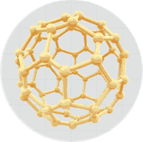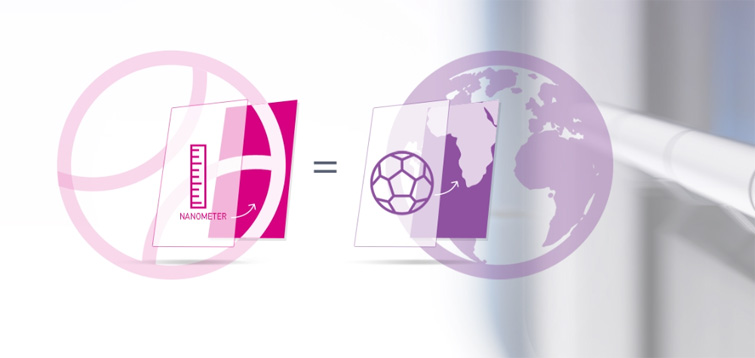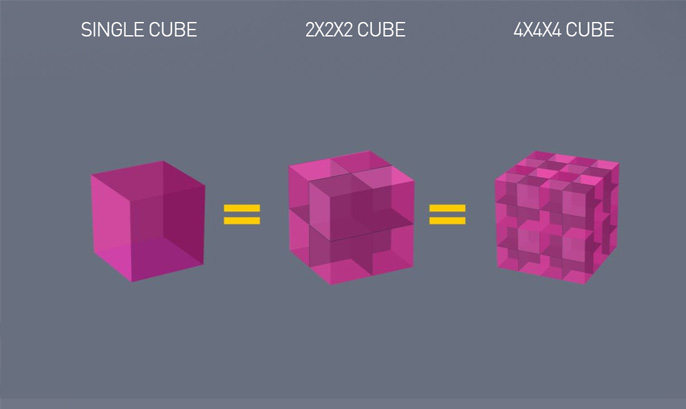Nanotechnology is the science of manipulating matter at the atomic or molecular level between one and 100 nanometers – to create materials with unique properties.
Nanotechnology
Nano. Bigger Than You Think.


Nano. Bigger Than You Think.
Nanotechnology is the science of manipulating matter at the atomic or molecular level between one and 100 nanometers – to create materials with unique properties.





Nanometers are very small. One nanometer is one billionth of a meter. A sheet of paper is 100,000 nanometers thick. If you compare the size of one nanometer to the diameter of a tennis ball, it would be like comparing the diameter of a soccer ball to the diameter of the Earth.

The secret of nanotechnology is the small size of the particles and the relationship between the surface area and the size of the object. Nano-sized objects offer more surface area than microscopic objects with similar volumes. A 1 cm3 cube has a surface area of 6 cm2. This same cube, if divided into eight smaller cubes (2 x 2 x 2), would have twice as much surface area as the original cube, or 12 cm2. Divide it again (4 x 4 x 4) and you’d have four times the surface area as the original cube or 24 cm2. More surface area means you have more potential to interact with the surrounding environment. In the case of smaller nanopigments, their total greater surface area lets them absorb more light and provide deeper, richer colors.